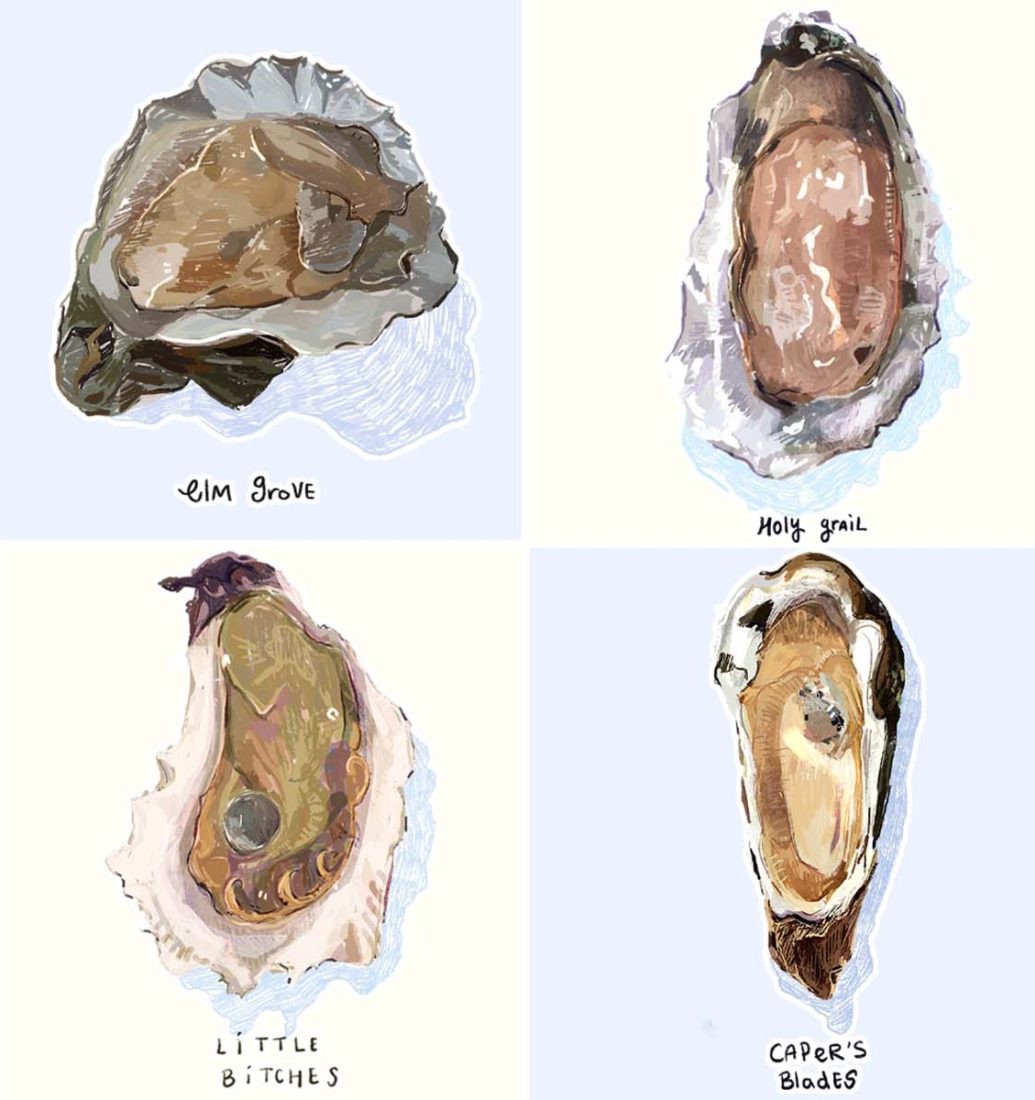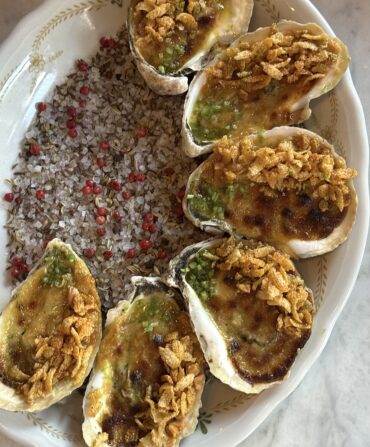An abundance of oyster farms and natural reefs trace the coastlines of the South, producing some of the country’s highest-quality Eastern oysters (or Crassostrea virginica). The hundreds of varieties harvested, all with different shapes, flavors, and textures, can lead to confusion—and often frustration—when the time comes to choose what to slurp from the raw bar. We asked seventeen Southern oyster experts to weigh in on their favorite varieties. Below, find our top picks for each coastal state in the South.
Alabama
Despite only having sixty miles of coastline, Alabama is historically one of the largest processors of oysters in the United States, from growing to shucking the tasty bivalves.
Isle Dauphine
Dauphin Island
Harvested to order by the father-and-son team at Mobile Oyster Company, these average-sized oysters are firm and very briny. They are grown in raised cages off the west end of Dauphin Island, where visitors can walk to the farm from the beach. “This very sustainable method ensures that only the mature oysters are harvested and keeps the quality and taste consistent,” says Eric Brownlee of the Katharine Brasserie & Bar in Winston-Salem, North Carolina.
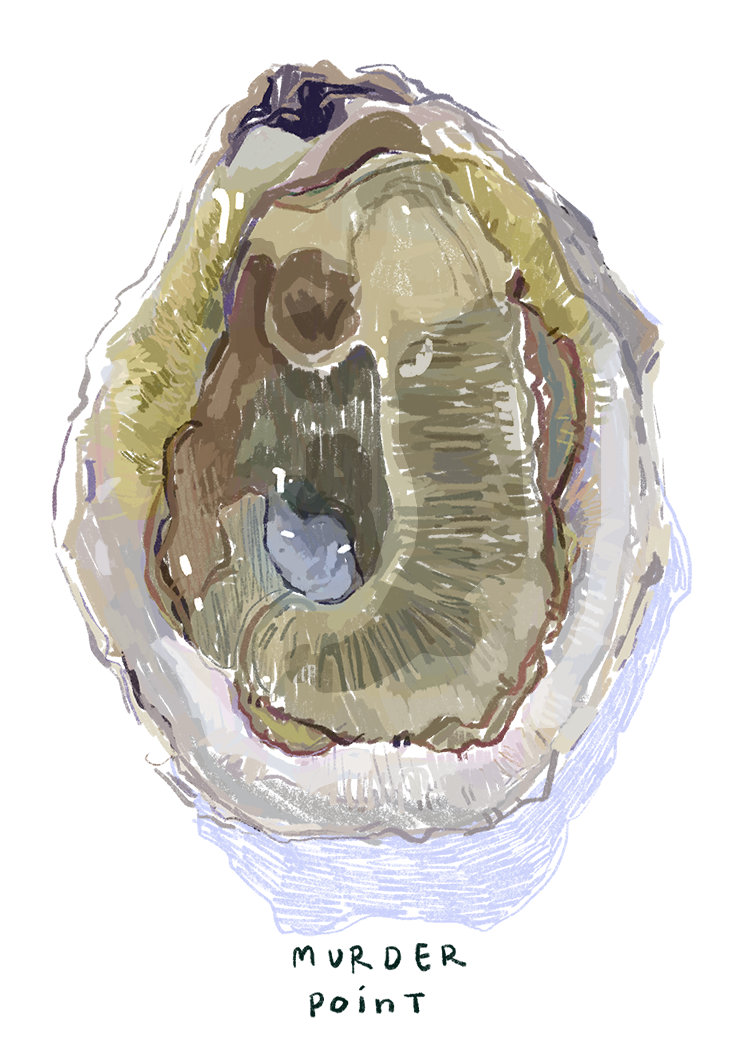
Murder Point
Bayou La Batre
“These oysters shocked the hell out of everyone when they hit the market as petite, buttery oysters in a land of wild, muddy beasts,” says Bryan Rackley, co-owner of Watchman’s in Atlanta. Deep-cupped and plump, these silky oysters grown by Murder Point Oysters finish sweet and clean.
Point aux Pin
Bayou La Batre
The silky texture of these meaty oysters is similar to that of Murder Point. Harvested by Point aux Pins oyster farm in Grand Bay, they are consistently flavorful.
Florida
Although Florida boasts oyster varieties fresh from the Gulf and the Atlantic, Apalachicola Bay produces 90 percent of the state’s oysters in its thirty mile stretch of shallow water.
Boonies
Panacea
The farm-raised Boonies from family-run Boonedocks Oyster Co. are clean, sweet, and salty.
Little Honeys
Spring Creek
These oysters are meticulously grown on a family-owned farm within the diverse ecology of Apalachee Bay. “Things are coming together for a lot of farms [in Florida] right now, and nobody’s doing it better than Jody and Dewey Houck of Cypress Point Oysters,” Rackley says. “We like what they’re doing so much that we got a lease nearby so we could learn from them.”
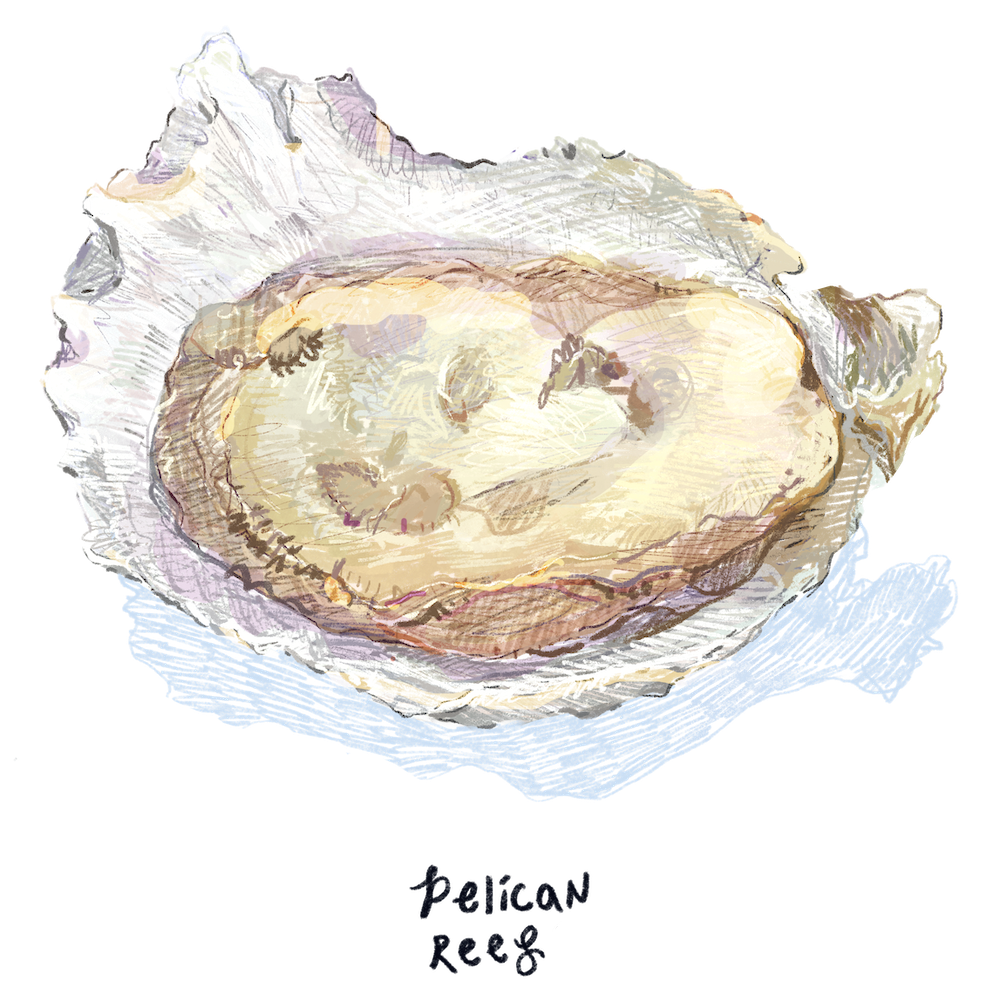
Pelican Reef
Cedar Key
This Gulf coast oyster variety from Cedar Key Seafarms has a deep cup and flat top shell that makes it easy to quickly shuck without losing the liquor within. “[Pelican Reefs] are one of my favorite farmed virginica oysters because of their perfect saltiness and strong creaminess,” Brownlee says.
Salty Bird
Tallahassee
The mild and consistent Salty Bird oysters come from Pelican Oyster Co. “These are great examples of what Florida waters can do. Salty, fresh, and delicious,” says Ryan Prewitt of Pêche in New Orleans. Adam Evans of Birmingham’s Automatic Seafood and Oysters agrees: “[Pelican Oyster Co.] really cares about the ecosystem as a whole and how the oysters play a part in it.”
Georgia
Regulations in Georgia make oyster farming difficult, but a few locals are up for the challenge, harvesting both farmed and wild oysters along Georgia’s short coastline.

McIntosh
Harris Neck
The high salinity of the marshy Georgia coastline where E.L. McIntosh & Son Seafood farm produces juicy, plump, and slightly peppery oysters. “Earnest and Earnest, Jr. are particularly adept at farming oysters in a region where eight-foot tide swells require a specific level of skill, experience, and understanding,” says Trevor Elliot, the chef de cuisine at the Grey in Savannah, Georgia. “Every year, the cups on these oysters get deeper and the briny, mineral liquor tastes cleaner. If I had to choose one Southern oyster, I think I would go with the McIntosh oyster.”
Wild
Townsend
Established in 1997, Sapelo Sea Farms is the oldest clam farm in Georgia, growing clams and harvesting wild oysters in the waters surrounding Sapelo Island. The owner, Captain Charlie Phillips, focuses on sustainability and strives to protect the waters where his shellfish grow. His oysters are salty and plump with big, hard shells, perfect for a Lowcountry oyster roast, Brownlee says.
Louisiana
One of the largest intact natural oyster reefs in the world is found in Louisiana. Whether wild or farmed, Gulf oysters tend to be larger and meatier than their Atlantic counterparts.
Beauregard
Grand Isle
Grown by Caminada Bay Oysters, this variety is giant, meaty, and fit for frying. “It has a strong, earthy brininess that is perfect for the steak lover,” Brownlee says. “These are the closest [farmed] oyster to a wild Louisiana oyster that begs to be made into a po’boy.”
Bright Side
Grand Isle
These off-bottom oysters from Bright Side Oysters are raised sustainably. “They are some of the cleanest and briniest oysters I’ve had out of Louisiana and the owner, Nathan Herring, is a really hardworking and passionate guy,” says Alon Shaya of Pomegranate Hospitality in New Orleans.
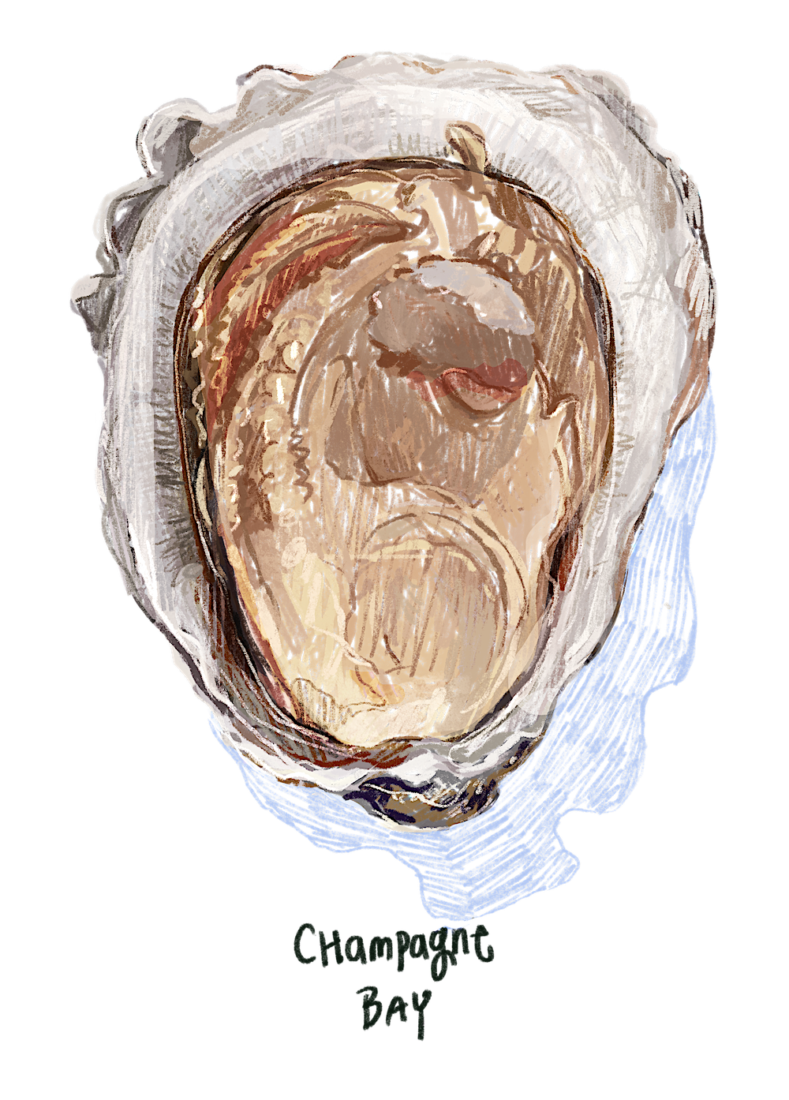
Champagne Bay
Grand Isle
Jules Melancon, the fisherman behind Caminada Bay Oysters, names his oysters after the waters from which they are harvested. His oysters, including Champagne Bays, are grown in off-bottom cages to produce high-end delicacies.
Southern Belle
Grand Isle
Grown in floating cages, these sustainably farmed oysters from Grand Isle Sea Farms offer a classic Gulf flavor. “They are changing the oyster mindset in Louisiana, so we support them whenever they are available,” says Paul Manley of Sea Level NC in Charlotte.
Maryland
In the past, overharvesting left Maryland’s oyster population depleted, but it’s bouncing back thanks to nonprofit oyster recovery efforts. Oysters draw their flavors from the waters in which they are grown, and the varieties found around the Chesapeake Bay are mild, sweet, and not particularly salty due to the low salinity of its brackish waters.
Choptank Sweets
Cambridge
Named for the river in which they are grown, Choptank Sweets are produced by the Choptank Oyster Company, the oldest continually operating oyster farm in Maryland, and are silky, snappy, and sweet.
Harris Creek
Wittman
The family who owns and operates Harris Creek Oyster Co., located between St. Michaels and Tilghman Island, have farmed and fished on Maryland’s Eastern Shore for more than twelve generations. Their variety is plump, juicy, and sweet.
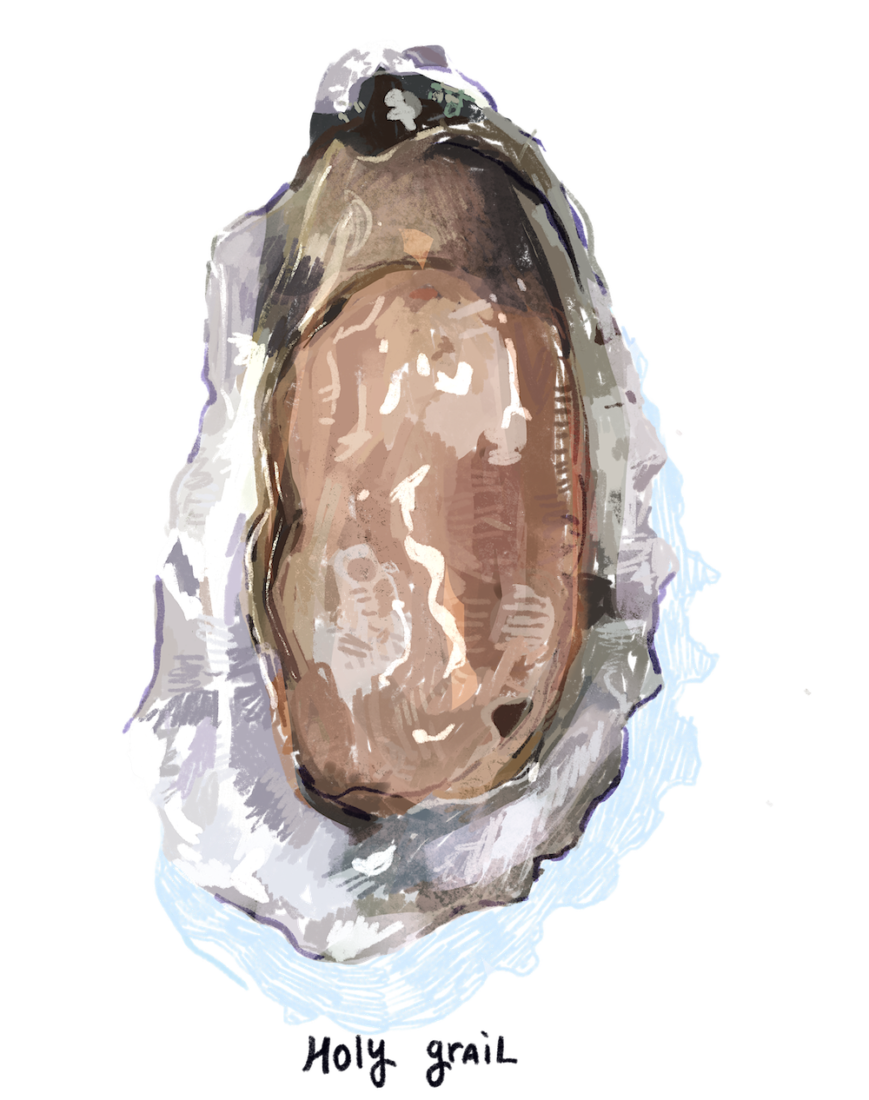
Holy Grail
Fishing Creek
These Chesapeake Bay oysters from Hoopers Island Oyster Co. are robust, earthy, and sustainably raised.
Snow Hill
Snow Hill
These fat and salty oysters from Scotts Landing Shellfish have a creamy, bread-like sweetness similar to New Brunswick, Canada’s Beau Soleil oyster, Brownlee says. “I like to eat them raw for the sweet and freshwater briny taste that isn’t too salty.”
Sweet Jesus
Hollywood
Meaty and surrounded by plenty of liquor, this upper Chesapeake Bay oyster is subtly sweet with mineral and mossy flavors. Carefully grown by Hollywood Oyster Company, it has hints of celery and a clean finish.
Mississippi
Mississippi Gulf oysters are plump, rich, and hard to come by, due to severe freshwater flooding along Mississippi’s coast.
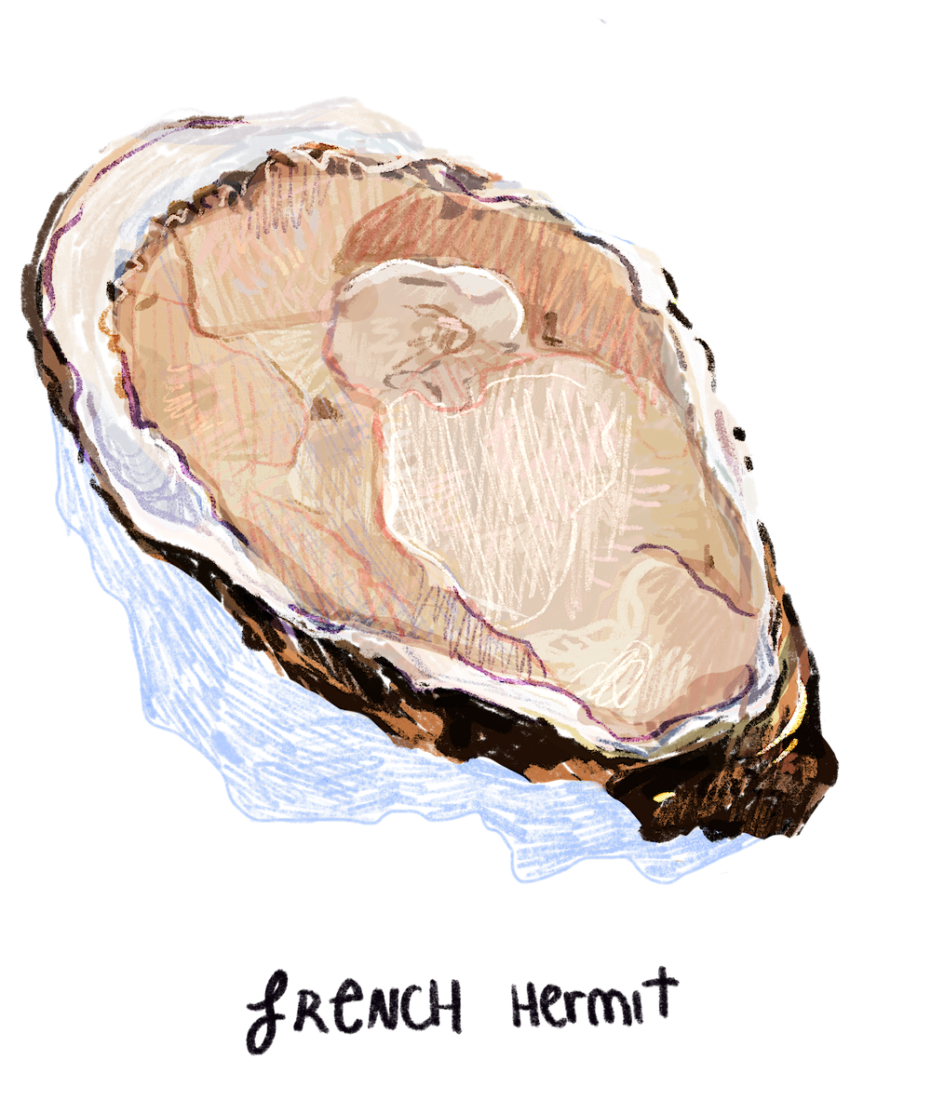
French Hermit
Deer Island
French Hermit Oyster Co.’s eponymous oysters are complex and well-tended to, Evans says. With a mild, clean, and fresh taste plus sweet and earthy undertones, this Mississippi Sound variety is “textbook sugar and salt,” Rackley says. “The often-rough waters roll the deep-cupped oyster around a lot, giving the meat a lumpy-plump shape that almost spills out of the shell,” Brownlee adds. “It finishes with a sweet butter creaminess with undertones of sea and cucumber when eaten ice-cold and raw.”
North Carolina
With both shallow- and deep-water reefs along its coastline, North Carolina provides ideal habitats for farmed and wild oysters.
Chadwick Creek
Bayboro
Chadwick Creek Oysters’s namesake variety is delicate and buttery with a sweet finish. Cultivated in the wild, the result is a deep-cupped, bright white oyster.
Core Sounders
Smyrna
These oysters from Core Sound Oyster Company are creamy with a sweet finish. “This variety is one of the best examples of a premium North Carolina oyster,” says Sunny Gerhart of St. Roch Fine Oysters + Bar in Raleigh. “They are great raw and roasted.” Ricky Moore of Saltbox Seafood Joint in Durham roasts them in the shell and pairs them with a homemade family dipping sauce: mayonnaise, hot sauce, vinegar, ketchup, mustard, salt, and pepper.
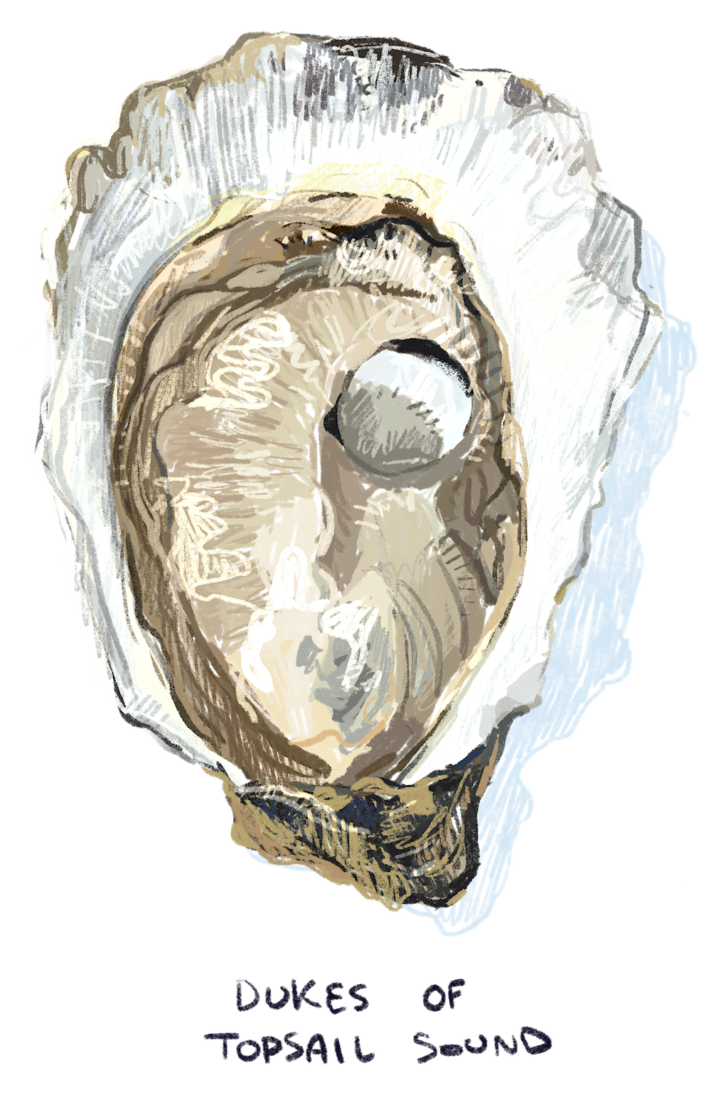
Dukes of Topsail Sound
Hampstead
“Dukes of Topsail Sound are arguably the best damn oyster in the South,” Rackley says. “They always have great shell density, they’re easy to shuck, the size stays consistent, and in the winter, the gills turn jade green when the algae blooms. I would never skip out on Dukes if I saw them on a menu.” These rich oysters from N. Sea Oyster Co. have a strong, buttery brininess. “They taste of pine needles if you get to them at the right time,” Evans says.
Sea Level Salts
Sea Level
Sea Level Salts, a sweet oyster with medium to high brine and low minerality, are grown by the farmers of Morris Family Shellfish Farms in Nelson Bay, located on the Core Sound. “At Sea Level NC, we shuck over four-hundred thousand of these annually,” Manley says. “They’re my absolute favorite.”
Sea Monsters
Harkers Island
These extra briny, monster oysters from the southern Outer Banks are grown by Ryan Bethea, the owner of Oysters Carolina who didn’t taste fresh oysters until his early twenties. This crisp, clean, and very salty green-gill variety is Bethea’s best seller in the winter.
South Carolina
The state’s flat coastline, vast tidal areas, and natural oyster reefs make for ideal oyster growing conditions, producing an abundance of briny, meaty varieties.

Caper’s Blades
Capers Island
Clammer Dave grows his elongated and daintily cupped oysters in wild, jagged clusters in the reefs outside of Charleston. “Dave Belanger painstakingly hand-harvests and purges the oysters until he deems them ready to serve,” Elliot says. “What we are left with is a beautiful, clean, salty, algae-rich oyster.”
Lowcountry Cups
Green Pond
Lowcountry Oyster Co. produces a salty and consistent Southern oyster with a deep cup. “They are easy to shuck with a decent top lid, proper size, and healthy meat-to-shell ratio,” Manley says.
Sea Clouds
Charleston
Barrier Island Oyster Co. grows pristine, white oysters with small, uniquely shaped cups. “They are raised in floating cages and produce a very clean, briny, and beautiful single oyster,” Elliot says.
Single Lady
Beaufort
Lady’s Island Oyster Inc. produces clean, deep-cupped, and plump oysters. “These oysters are perfect to shuck and eat on hot, humid Charleston evenings,” Brownlee says. “They have a nice firm flesh with a salt-heavy beginning and sweet finish.”
Steamboat Creeks
Edisto Island
“The Steamboat Creeks from Steamboat Creek Oyster Farm are medium-sized, deep cups with plump meat and high salinity,” says Shamil Velazquez of Delaney Oyster House in Charleston. “The farmer, Mike Kalista, used to work for us as a shucker back in the day and always had a dream of starting his own oyster farm. Today, we’re proud to feature the oyster he’s been working hard on for so long.”
Texas
Oyster regulations are strict in the Lone Star State, making Texas oysters a prized commodity.
Elm Grove
Anahuac
“Sometimes they are called ‘Rare Elm Grove Ruffles’ because they are indeed hard to come by and develop the most beautiful, ruffled shell,” Brownlee says of the oysters harvested from Galveston Bay. “True to Texas, Elm Groves are twice as big and twice as firm as your select Gulf oyster. Chargrilling these oysters is the way to go for me. Salty and chewy with a hint of sweet green beans, it pairs well with a spicy butter and crunchy bread.”
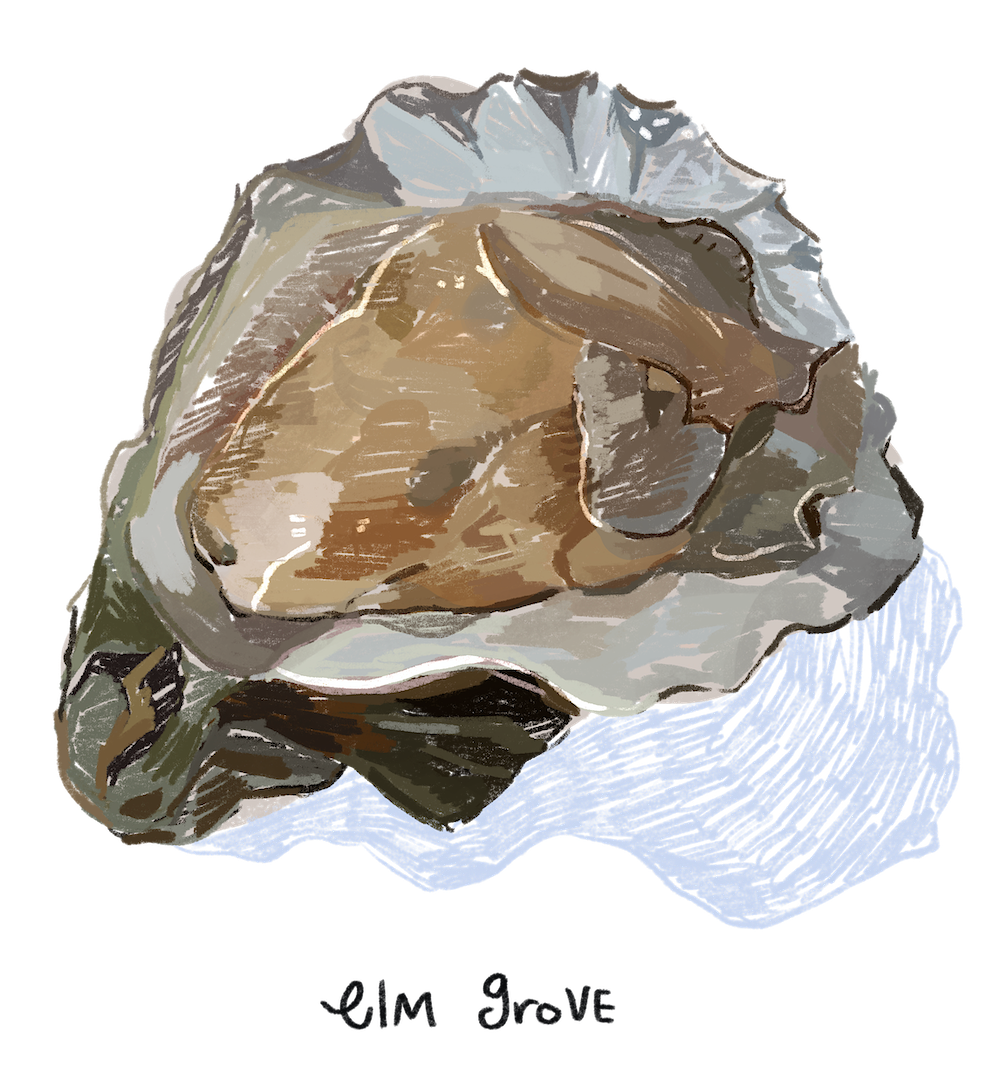
Virginia
Virginia’s Chesapeake Bay area is perfect for oysters. The various combinations of saltwater and freshwater produce a variety of tasty oysters with a wide range of salinities.
Battle Creek
Chincoteague Island
This variety from War Shore Trading Co. has a smooth body in a well-formed cup. “Being closer to the coast, they’re a bit heavier on salt and one the best ‘local’ oysters I’ve ever had,” says Scott Herbst of Sailor Oyster Bar in Annapolis, Maryland.
Chunus
Cape Charles
Nicknamed the “bottoms up” oyster, this Cherrystone Aqua-Farms variety is perfectly paired with a spritz of lemon during cocktail hour. “Chunus oysters are designed to taste like one of my all-time favorite oysters, the Kumamoto oyster [a Japanese variety]. They do not disappoint with their small, deep cup and mild brininess with hints of honeydew,” Brownlee says.
Little Bitches
Cape Charles
Cherrystone Aqua-Farms is home to a particularly needy oyster. In order for these Little Bitches to develop their deep cups, they must tumble while they’re young to knock excess shell off the bill. What results is a mildly salty oyster that has hints of mint and cucumber and pairs well with prosecco.
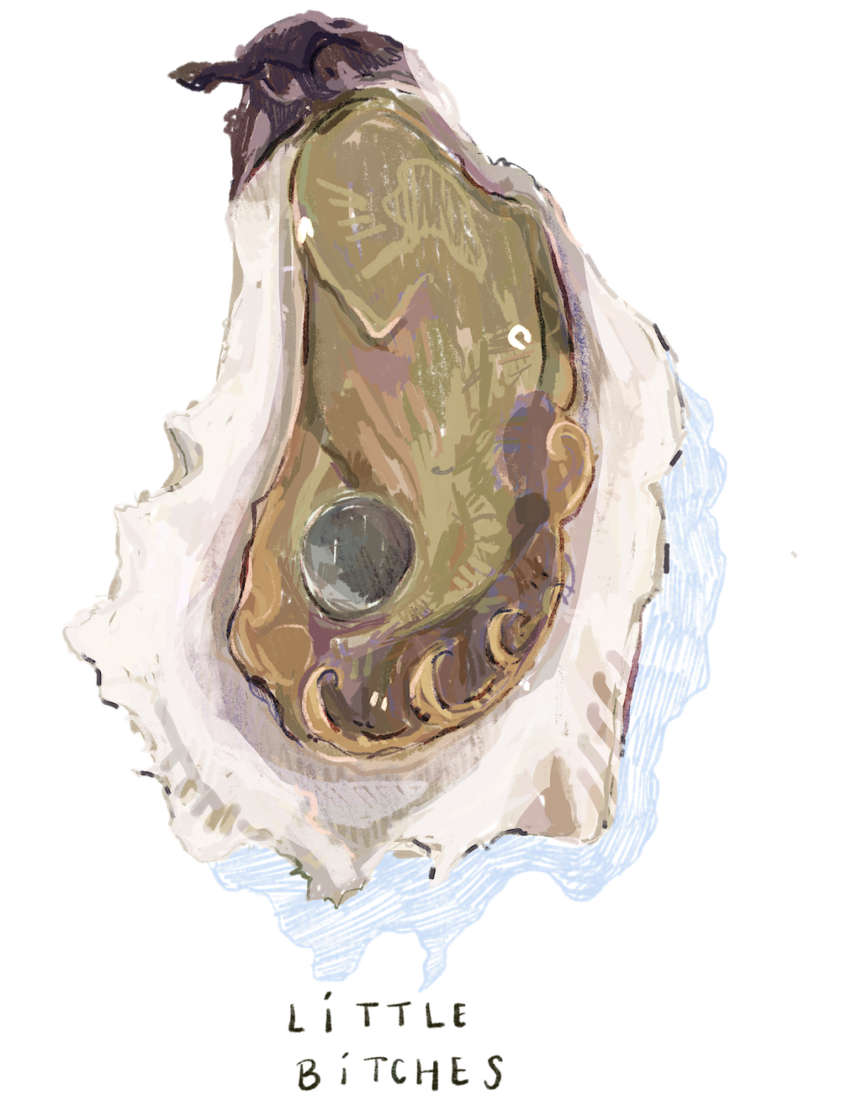
Pleasure House
Lynnhaven
The family behind Pleasure House Oysters cares for their oysters by hand from the beginning to the end of production. Their oysters are fat, firm, and salty (but not too salty).
Rochambeau
Yorktown
This variety from Rappahannock Oyster Co. comes from a farm situated at the mouth of the York River, less than thirty miles from the Chesapeake Bay and Atlantic Ocean. “The mineral-heavy freshwater from the Blue Ridge Mountains produces an oyster with less salinity than the average East Coast oyster,” Elliot says. It’s a perfectly balanced blend of sweet and salt.
Contributors: Adam Evans (Automatic Seafood and Oysters, Birmingham, Alabama); Alon Shaya (Pomegranate Hospitality, New Orleans, Louisiana); Bobby Matos (La Lucha, Houston, Texas); Bryan Rackley (Watchman’s, Atlanta, Georgia); Brooks Reitz (Leon’s Oyster Shop, Charleston, South Carolina); Eric Brownlee (the Katharine, Winston-Salem, North Carolina); Paul Manley (Sea Level NC, Charlotte, North Carolina); Ricky Moore (Saltbox Seafood Joint, Durham, North Carolina); Ryan Hacker (Brennan’s, New Orleans, Louisiana); Ryan Prewitt (Pêche, New Orleans, Louisiana); Scott Herbst (Sailor Oyster Bar, Annapolis, Maryland); Shamil Velazquez (Delaney Oyster House, Charleston, South Carolina); Steven Satterfield (Miller Union, Atlanta, Georgia); Sunny Gerhart (St. Roch Fine Oysters + Bar, Raleigh, North Carolina); Trevor Elliot (the Grey, Savannah, Georgia); Whitney Otawka (Savannah, Georgia); 167 Raw (Charleston, South Carolina)


